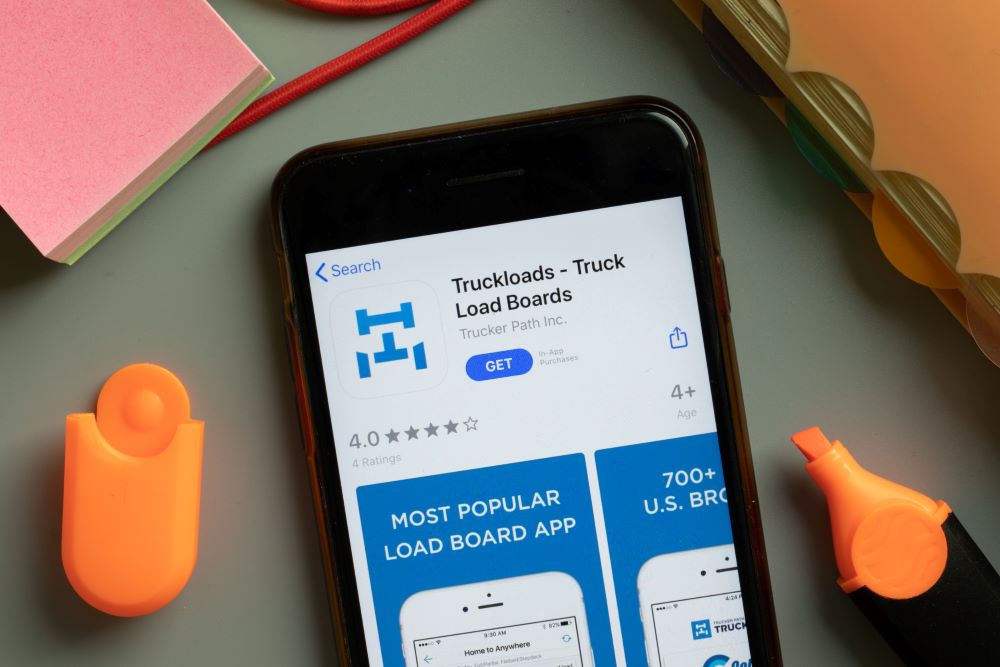
If you’re an owner-operator looking to take on more loads, then Amazon might be the answer.
Amazon Relay offers truck drivers a great opportunity to tap into Amazon’s vast logistics network, providing steady loads and reliable pay. Through the app, drivers can find and manage jobs, while the company’s regular demand ensures consistent work.
Whether you’re an owner-operator or part of a fleet, Amazon Relay can help grow your business with quick payments and no load minimums. However, it’s not without its challenges.
Let’s explore everything you need to know to decide if Amazon Relay is the right fit for you.
Amazon Relay Overview
Amazon Relay is a platform that connects trucking companies, also known as carriers, with Amazon’s vast freight network. It’s a kind of relay load board designed for Amazon.
It allows carriers to find and book loads easily using the Amazon Relay app, which offers features like fast payments, real-time tracking, and load management.
Through Amazon Relay, carriers can access thousands of shipping loads, secure short-term contracts, and receive rewards like fuel discounts and early access to loads. It’s designed to help fleet owners and drivers grow their businesses with flexible options and convenient tools for managing freight.
If you’re an owner-operator or run a trucking business, Amazon Relay is a convenient load-board app to help you find and execute loads. It’s especially useful if you own a box truck.
How Amazon Relay Functions
Are you considering using the Amazon Relay load board? Here’s how the process works for Amazon Relay drivers.

Load Board Access
Amazon Relay offers carriers access to its load board, where they can find a wide range of shipping opportunities.
The load board shows real-time listings of available freight, making it easy to find and book loads that fit your schedule. As an Amazon Relay driver, you can also see important details, like the load price, distance, and delivery times. This helps you choose the best options for your business.
Short-Term Contract Options
For carriers looking for more predictable income, Amazon Relay provides short-term contracts.
Amazon Relay program contracts allow you to secure multiple loads for a fixed period, like one or two weeks.
This helps ensure a steady stream of work and is a great way to reduce downtime, giving carriers the ability to plan and budget more effectively.
Truck Posting Process
Amazon Relay simplifies the process of booking loads through its “Post a Truck” feature.
Carriers can create a Relay account, post available trucks, and their interior cargo dimensions, and specify their preferred routes. Then the system will automatically match them with suitable loads.
This helps minimize empty miles and maximizes efficiency by keeping your trucks on the move.
Types of Loads
Amazon Relay supports a variety of load types and truck classifications, including box trucks, dry vans, refrigerated (reefer) loads, and inter-modal freight.
This range of options allows owner-operators to choose the type of cargo that best suits their equipment and expertise. It also gives you flexibility in the kinds of hauls you take on.
Eligibility for Amazon Relay
According to the Amazon Relay carrier terms, here are the conditions you need to meet to qualify for being a driver.

Driver Criteria
To be eligible for Amazon Relay, drivers need to meet specific qualifications.
First, they must hold a valid Commercial Driver’s License (CDL). For semi-trucks, a Class A CDL is required, while for box trucks, a Class B CDL is enough.
Drivers must also be at least 21 for interstate routes and 18 for intrastate commerce.
You’ll also need to maintain strong safety records, with low scores in Amazon’s Behavior Analysis and Safety Improvement Categories (BASIC), including less than 60% in Unsafe Driving and HOS Compliance, and less than 75% in Vehicle Maintenance.
Carrier Criteria
Carriers interested in joining Amazon Relay must have an active DOT number with interstate authority and an MC number.
The carrier entity should be authorized for property and for-hire operations. Amazon Relay also requires carriers to have a satisfactory safety rating or no rating from the Federal Motor Carrier Safety Administration (FMCSA).
Carriers with scores above Amazon’s thresholds for Unsafe Driving, HOS Compliance, or Vehicle Maintenance may face challenges getting approved.
Vehicle & Trailer Standards
Amazon Relay has specific standards for the types of vehicles and trailers that can be used.
Carriers must operate either a 53-foot dry van or reefer trailer, or a 28-foot dry van trailer. For tractors, both sleepers and day cabs are acceptable.
Box trucks must be at least 26 feet in length, with interior dimensions of 26′ x 8′ x 8′, and must have a tuck-under liftgate.
It’s important to note that cargo vans, sprinter vans, and 24-foot box trucks are not eligible for Amazon Relay loads. All vehicles must be clean, well-maintained, watertight, and free from strong odors.

Amazon Relay Insurance Guidelines
Amazon Relay requires carriers to carry specific insurance coverages. These include:
- Commercial general liability: $1,000,000 per incident and $2,000,000 aggregate
- Auto liability: A minimum of $1,000,000
- Cargo coverage: $100,000
- Trailer replacement coverage: $50,000 for power-only loads
- Worker’s compensation: Required if the carrier employs W-2 drivers, along with employer liability coverage of at least $100,000
It’s important to have all these insurances validated before applying to avoid any delays. For more details on insurance, you can also check the Amazon Relay portal FAQs.
Performance Standards
Once you’re accepted into Amazon Relay, carriers are scored based on four performance metrics:
- On-time: Meeting pickup and delivery times
- App usage: Proper use of the Amazon Relay app for load tracking and updates
- Disruption-free: Completing loads without issues like missed assignments or delays
- Acceptance: Consistently accepting work offered
Amazon scores performance on a six-week rolling basis, grading from A+ to F. A higher score gives you access to more load opportunities, while low grades could result in fewer loads or even suspension.
Benefits of Amazon Relay
Considering using Amazon Relay to give your truck driving a boost? Here are some of the main advantages of using the Relay load board.
User-Friendly App
The Amazon Relay app makes managing loads simple.
Drivers can easily search for, book, and track loads right from their phones. The app also helps with updates, check-ins, and other essential tasks, making it easy to stay on top of everything while on the road.
Quick Payments
Amazon Relay offers fast payments. Once you complete a load, payments are processed weekly, meaning you’ll typically get paid within 1-2 weeks.
This quick payment system helps keep your cash flow steady.
Steady Demand
Amazon’s high volume of shipments means there’s always work available.
Whether during peak seasons or regular weeks, carriers can rely on steady load opportunities to keep their trucks moving.

No Load Minimums
With Amazon Relay, there’s no pressure to meet a load minimum. You can choose how many loads you want to take, giving you flexibility to work at your own pace and schedule.
Built-in Navigation
The Amazon Relay app comes with built-in navigation, helping drivers follow the best routes. It provides real-time updates, ensuring safe and efficient deliveries to Amazon facilities.
Drawbacks of Amazon Relay
While Amazon’s Relay load board is useful, it also comes with its potential drawbacks.
Night Run Frequency
Amazon Relay often requires drivers to run at night. Many of the loads are scheduled for evening or overnight shifts.
This can be challenging for drivers who prefer daytime driving or want a more regular sleep schedule.
Above-Average Requirements
As we’ve already outlined, Amazon Relay has strict requirements for carriers. These include specific insurance coverage, vehicle standards, and safety ratings.
Meeting these requirements can be difficult, especially for smaller carriers or new businesses.
Starting with Amazon Relay
If you’re interested in becoming an Amazon relay driver, getting started is relatively easy. Here are the key steps to follow.
Step 1: App Download
To get started with Amazon Relay, first download the Amazon Relay app. It’s available for both Android and iOS devices. This app will help you find and manage loads easily.
Step 2: Account Creation
Next, create an account on the Amazon Relay website. Follow the instructions to enter your company’s details. This will give you access to their load board and other tools.
Step 3: Information Submission
Submit all the required information, including your DOT number, MC number, and insurance details. Amazon will review your application and typically approve it within 2 – 4 business days.
Final Thoughts
Amazon Relay can be a great opportunity for truck drivers looking to expand their business and secure consistent loads. While it comes with certain challenges, it’s a convenient way to gain reliable, consistent loads – as long as you meet all the requirements.
If you’re ready to take the next step and need financing for your truck, get in touch with us at Mission Financial Services to explore flexible financing options designed for truckers. We make it easy to purchase your dream commercial vehicle and get your trucking business started


